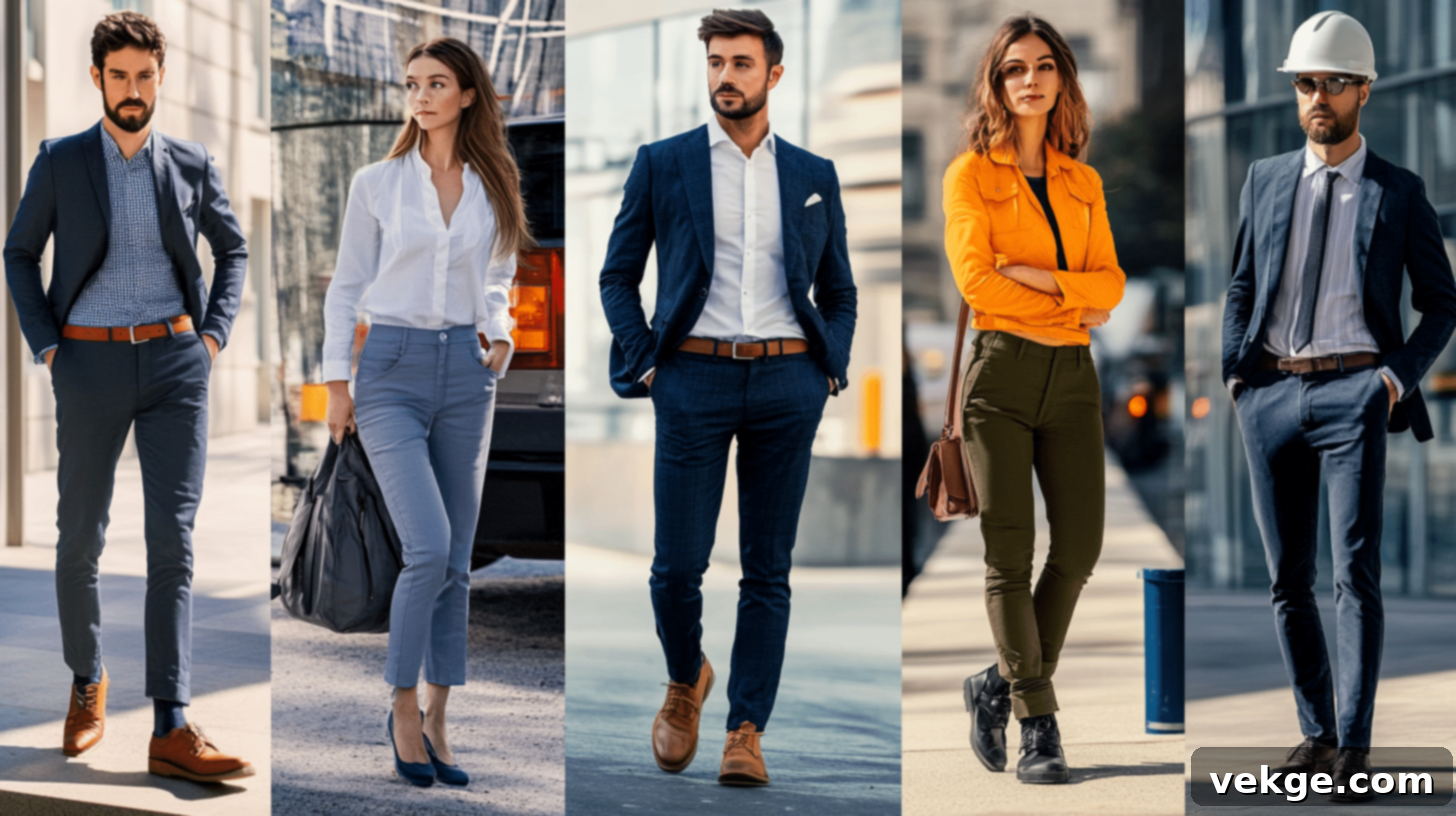The Architect’s Wardrobe: A Comprehensive Guide to Professional Attire for Designers
In the dynamic world of architecture, your clothing choices are far more than just a personal preference; they are an integral part of your professional persona. As a designer shaping the built environment, your attire reflects your attention to detail, your understanding of practical needs, and your ability to present a polished image in diverse settings. Whether you’re sketching designs in a studio, presenting concepts to a high-profile client, or navigating a busy construction site, your wardrobe needs to be versatile, functional, and reflective of your expertise.
This in-depth guide will navigate the everyday wardrobe decisions architects face, spanning from comfortable and practical studio wear to sophisticated attire for client engagements. We will delve into critical aspects such as seasonal considerations, appropriate footwear for various environments, essential safety gear for site visits, and how unique office cultures and regional expectations influence professional dress codes. Whether you are an aspiring student preparing for your first internship, a recent graduate embarking on your career, or a seasoned professional looking to refine your work wardrobe, this practical resource will equip you with the knowledge to dress appropriately and confidently for every facet of architectural practice.
The Everyday Architect’s Wardrobe: Balancing Professionalism and Practicality
General Dress Code Overview: Business Casual as the Baseline
The majority of architectural offices lean towards a business casual dress code. This flexible standard allows architects to maintain a professional appearance without the rigidity of traditional corporate wear. Business casual typically encompasses neat, well-fitted clothing that is polished but not overly formal. The essence of this style for architects lies in its versatility, enabling a seamless transition from desk work to impromptu client discussions or a quick site visit. Common everyday choices include well-fitted slacks or chinos, crisp button-down shirts, elegant blouses, simple professional dresses or skirts, and clean, high-quality shoes.
Architects frequently find themselves needing to balance looking impeccable for client interactions with the practical demands of spending long hours at a computer, collaborating on design models, or even making a sudden trip to a nearby construction site. This often means opting for fabrics that are comfortable, durable, and resistant to wrinkling, ensuring you look presentable throughout a demanding workday.
Understanding Dress Codes Based on Office Culture and Job Site Demands
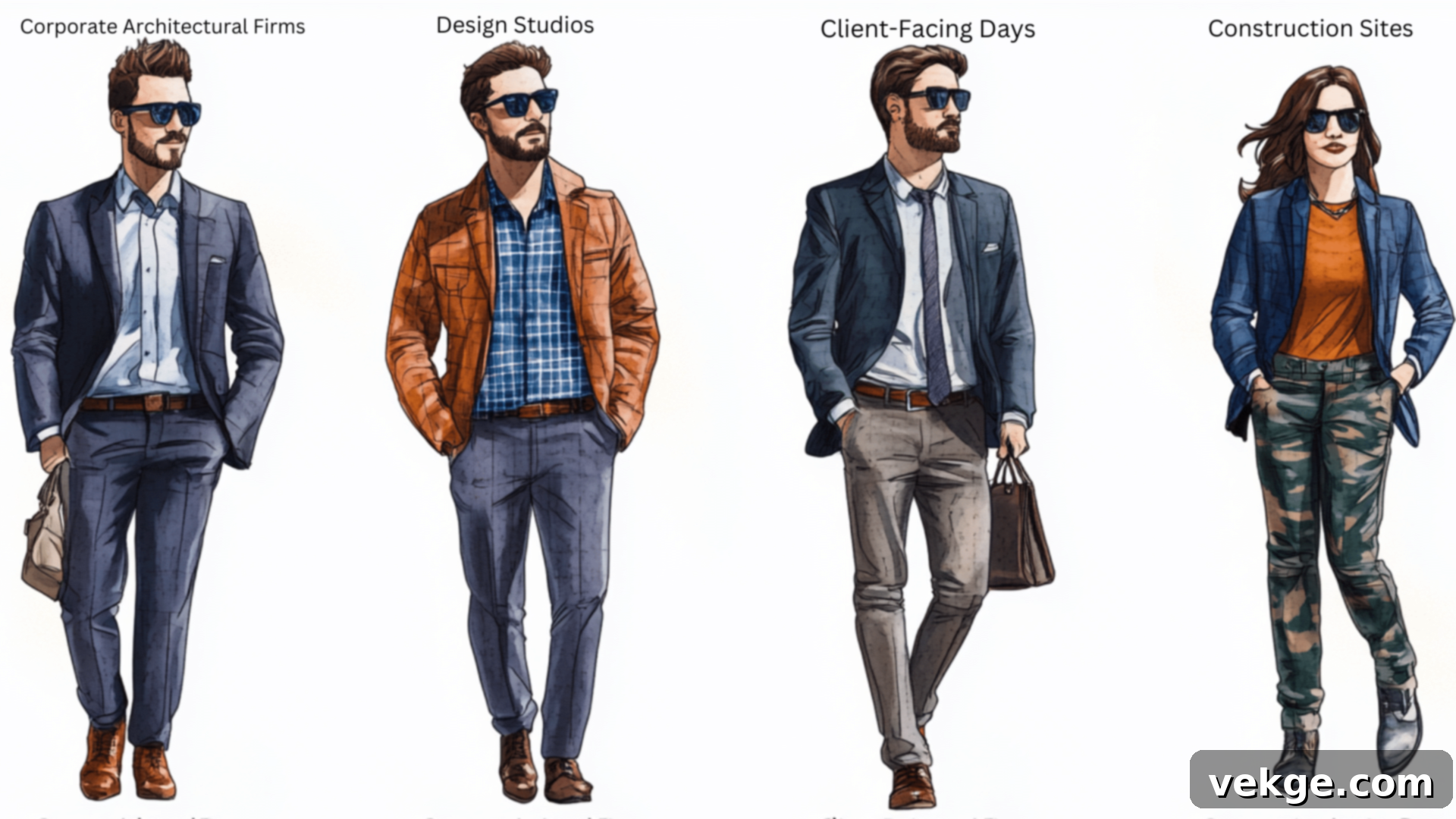
The “appropriate” attire for an architect can vary significantly, heavily influenced by the specific work environment and the nature of the tasks at hand:
- Design Studios: Often foster a more creative and relaxed atmosphere. These environments tend to be more forgiving, allowing architects to express their personal style through clothing, embracing unique pieces or more fashion-forward choices while still maintaining a professional edge. The focus here is on innovation and collaboration, sometimes leading to a more “smart casual” approach.
- Corporate Architectural Firms: Typically adopt a more conservative approach, especially if the firm frequently engages with corporate clients, government entities, or high-profile developers. In such settings, classic business casual or even full business attire might be expected to project an image of gravitas and trustworthiness.
- Construction Sites: Demand specific protective gear, which takes precedence over conventional office attire. This includes mandatory items such as hard hats, steel-toed boots, high-visibility vests, and weather-appropriate clothing designed for safety and durability.
- Client-Facing Days: Naturally call for a more polished and formal presentation than days spent exclusively at your desk. On these crucial days, your attire should convey confidence, competence, and a keen attention to detail, reflecting the quality of your design work.
It’s always wise for junior architects or those new to a firm to observe the attire of senior architects, particularly those in leadership roles. Their dress choices often set the tone and provide valuable cues about the firm’s unwritten dress code. Furthermore, geographical location and regional culture can also play a role; a firm in a bustling metropolitan hub like New York or London might adhere to stricter dress codes compared to a more laid-back creative hub like Austin or Barcelona.
Elevating Your Attire for Formal Settings and Key Presentations
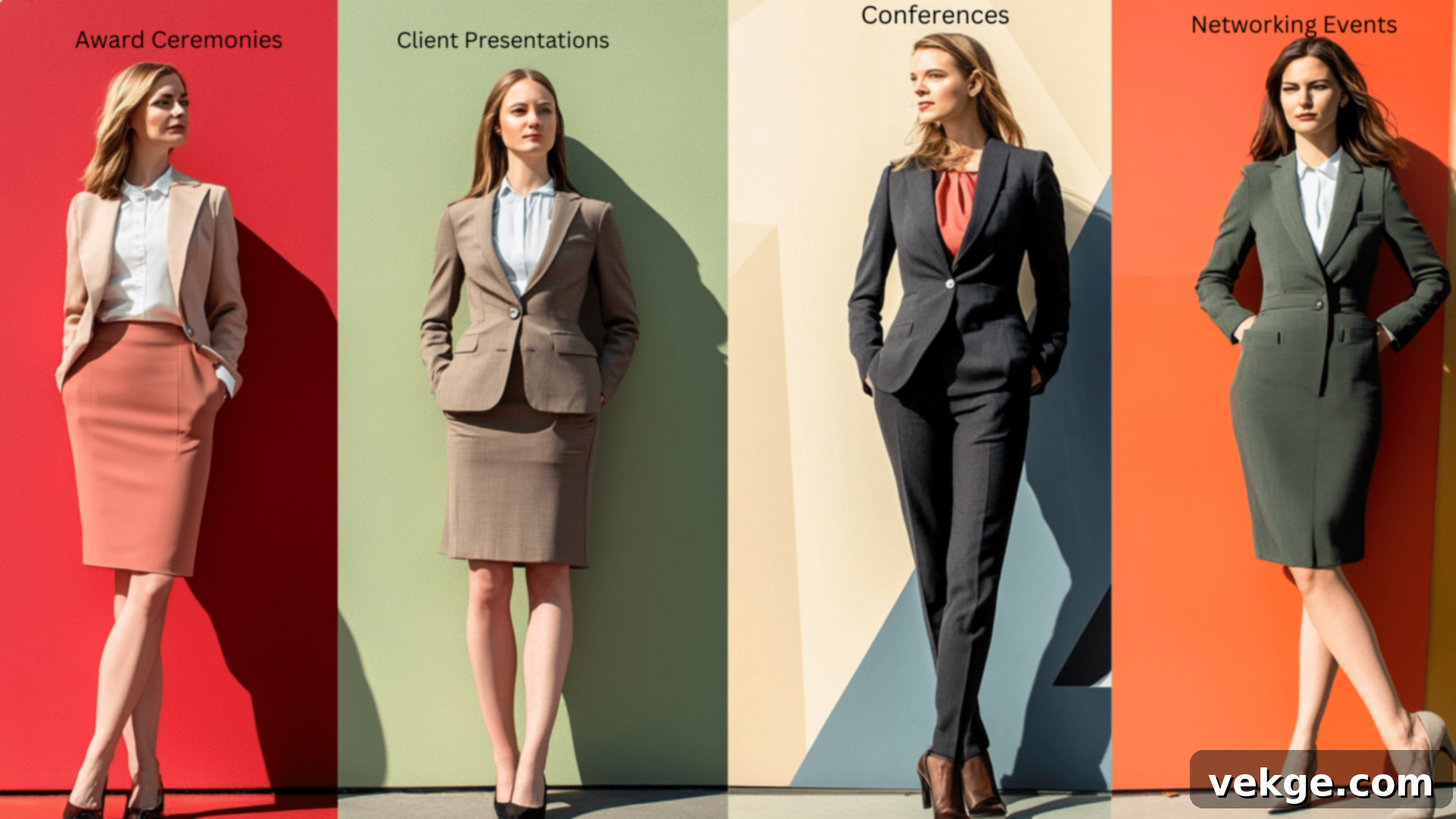
When architects attend high-stakes meetings, deliver crucial presentations, or represent their firm at industry conferences, elevating their attire is paramount. These occasions require a level of formality that reinforces their expertise and commitment:
- Client Presentations: Demand well-tailored suits (navy, charcoal, or black are classic choices) or dress pants paired with sophisticated blazers for men. Women can opt for tailored pantsuits, elegant dresses, or professional skirts paired with blazers. The goal is to project confidence and meticulousness.
- Conferences and Seminars: Call for professional attire that not only represents you well but also upholds the prestige and brand image of your firm. Business casual on the more polished end or full business attire is typically appropriate.
- Award Ceremonies and Galas: Often require formal business attire, which might range from dark suits for men to elegant cocktail dresses for women. In some high-profile events, black tie might even be specified. Consulting the event’s invitation is always recommended for such occasions. For inspirations, check out collections like cocktail dresses.
- Networking Events: Typically fall into the business casual category but lean heavily towards the polished end of the spectrum. The aim is to be approachable yet professional, ready to make a strong first impression.
In these formal settings, attention to detail is non-negotiable. This includes well-maintained, polished shoes, minimal and tasteful accessories, and clothing that is impeccably clean, pressed, and free of wrinkles. Many architects gravitate towards high-quality, simple pieces in neutral colors such as black, gray, and navy. This palette not only offers timeless elegance but also subtly echoes the clean lines, thoughtful design, and sophisticated minimalism that define their architectural creations, presenting a cohesive and powerful professional image.
Site Visit Essentials: Safety, Function, and Weather Preparedness
Visiting construction sites is a fundamental part of an architect’s role, demanding a unique blend of professionalism and practicality in clothing choices. On these sites, safety is the absolute priority, but maintaining a professional appearance, even amidst dust and debris, is also crucial for client and contractor interactions.
Essential Safety Gear for Construction Sites: Non-Negotiable Protection
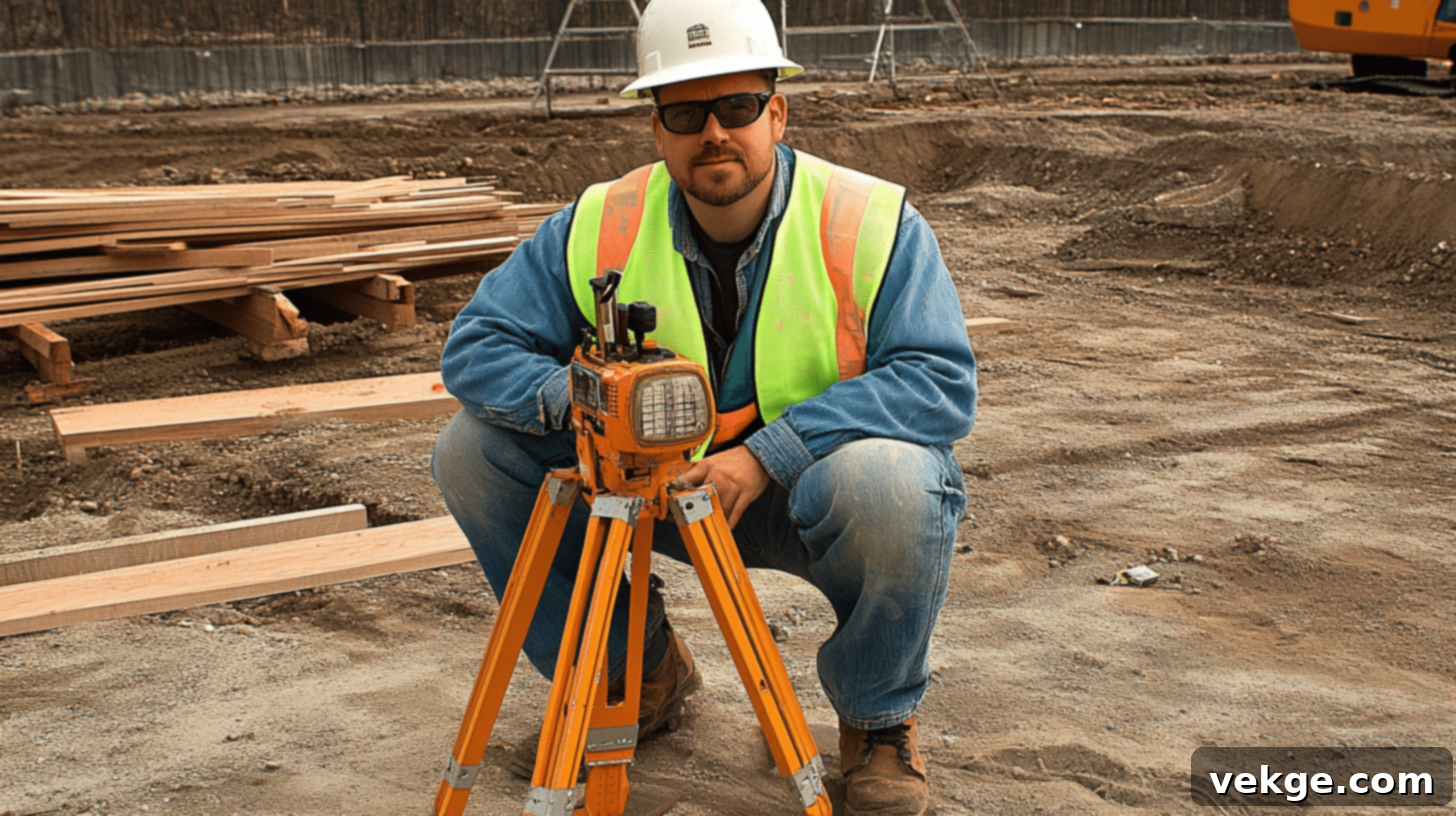
When stepping onto any active construction site, personal protective equipment (PPE) is not merely recommended—it’s often legally mandated and absolutely critical for your well-being. Prioritizing safety through your attire demonstrates responsibility and an understanding of site protocols.
- Hard Hat: A properly fitted hard hat that meets current safety standards (e.g., ANSI or EN) is paramount. It protects against falling objects and head impacts, which are common risks on construction sites. Always ensure it’s securely fastened.
- Steel-Toed Boots: These are non-negotiable. Steel-toed or composite-toed boots provide essential protection against falling materials, punctures from sharp objects, and compression injuries. They also offer crucial ankle support and a sturdy grip on uneven terrain.
- High-Visibility Vest or Jacket: A brightly colored, reflective vest or jacket (often in fluorescent yellow or orange) ensures you are easily seen by heavy machinery operators and other workers, significantly reducing the risk of accidents, especially in low-light conditions or busy areas.
- Safety Glasses: Protect your eyes from dust, debris, flying particles, and chemical splashes. Ensure they are comfortable and offer full coverage, ideally with side shields. Prescription safety glasses are also an option for those who wear corrective lenses.
- Gloves: Depending on the specific tasks or site conditions, sturdy work gloves can protect your hands from abrasions, cuts, and splinters.
Many architects complement this essential safety gear with a clean, fitted work jacket or a durable utility vest. These often feature multiple pockets, perfect for carrying notebooks, measuring tapes, laser distance meters, and other small tools, allowing for efficient work while maintaining a professional and organized appearance.
Weather-Appropriate and Durable Professional Clothing for Site Visits
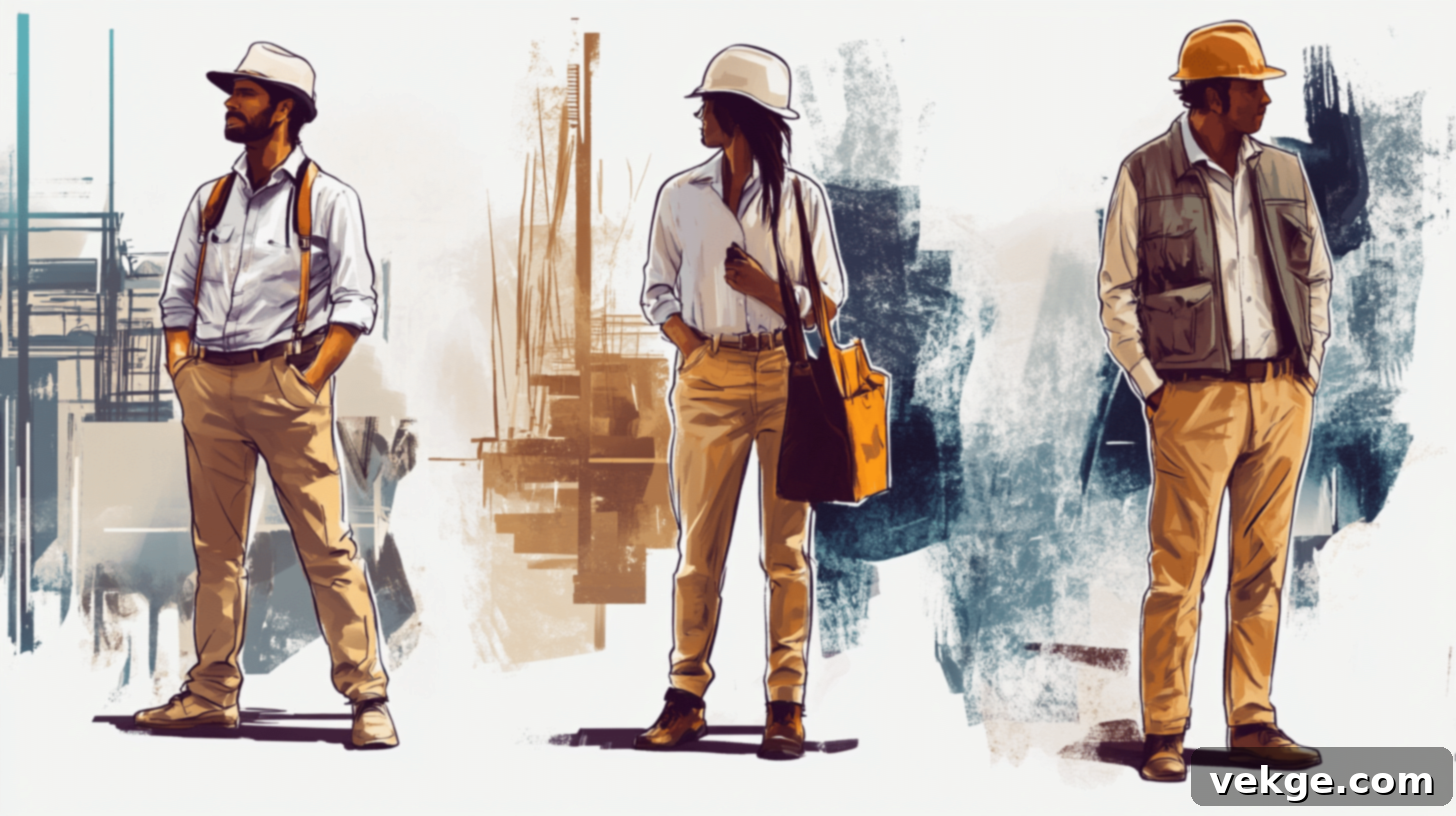
Beyond safety gear, your underlying clothing for site visits must be chosen with an eye towards weather conditions and durability, all while upholding a professional image. The goal is to remain comfortable and protected without compromising your professional standing.
- Summer Sites: Opt for lightweight, breathable fabrics that allow for air circulation and wick away moisture. Cotton chinos, durable cargo pants (if appropriate for the firm’s culture), and short-sleeve button-up shirts or performance polos work well. A wide-brimmed sun hat and high-SPF sunscreen are vital for prolonged outdoor exposure.
- Winter Sites: Layering is key. Start with thermal base layers under your regular work clothes to retain body heat. Add a warm, insulated, but professional-looking outer coat or jacket that can withstand cold temperatures. Water-resistant and windproof layers are highly beneficial.
- Rainy Days: Waterproof clothing is essential. A high-quality rain jacket and water-resistant or waterproof pants will keep you dry and comfortable. Look for jackets that are breathable to prevent overheating. Consider waterproof boot covers or ensuring your steel-toed boots are themselves waterproof.
- General Durability: Choose fabrics that resist tears, abrasions, and dirt. Darker colors can also help mask minor smudges accumulated on site. Avoid overly loose clothing that could snag on equipment or materials. Multiple pockets are always a bonus for carrying necessary items.
Always check the local weather forecast before heading to a construction site. It’s a prudent practice to keep a change of clothes, especially extra socks and a clean shirt, in your car or office for unexpected changes in weather or unavoidable site grime. Being prepared allows you to focus on the architectural details rather than discomfort.
Crafting Your Professional Image: Style, Practicality, and Versatility
An architect’s wardrobe is a toolkit, designed to meet the varying demands of their diverse profession. From intensive design sessions to high-level client interactions, each setting requires a thoughtful approach to attire.
Casual and Comfortable Options for Daily Work in the Studio
Given the long hours architects spend sketching, drafting, modeling, and collaborating, comfort is paramount without sacrificing professionalism. For many firms, a smart-casual approach is perfect for daily studio life:
- Bottoms: Dark, well-fitted jeans (without rips or excessive fading) are acceptable in many creative environments. Khakis or chinos offer a slightly more formal, yet equally practical, alternative. Tailored trousers in comfortable fabrics are also excellent.
- Tops: Collared shirts (polos or button-downs), knit tops, or quality t-shirts paired under a blazer or a smart cardigan can create a polished yet relaxed look. Natural, breathable fabrics like cotton or merino wool are ideal.
- Layering: Light sweaters, cardigans, or blazers are invaluable for adapting to varying office temperatures and instantly elevating a casual outfit for an unexpected meeting.
Suits and Formal Attire for Client Meetings and Presentations
When the stakes are high, such as during critical client meetings, project proposals, or public presentations, architects must project an image of undeniable competence and polish. This is where formal attire truly shines:
- The Versatile Suit: A well-fitted suit in a classic color—navy, charcoal gray, or black—is a cornerstone of any architect’s formal wardrobe. These colors convey authority and professionalism.
- Expressing Creativity: Architects can subtly infuse their personal style and creativity through distinctive ties, pocket squares, or elegant cufflinks, adding a touch of flair while maintaining overall professionalism.
- Female Professional Attire: Tailored pantsuits, elegant skirt suits, or blazers paired with sophisticated dress pants or skirts are excellent choices. A crisp blouse or a tasteful knit top completes the look. The emphasis should always be on clean lines, quality fabrics, and a flattering fit.
Seasonal Considerations in Architectural Attire
The changing seasons present unique challenges and opportunities for an architect’s wardrobe. Adapting your clothing to the weather ensures comfort and continued professionalism:
- Winter: Layering is essential. Quality wool or cashmere sweaters, cardigans, and blazers can be worn over button-downs or blouses. A warm, professional-looking overcoat or trench coat is crucial for commutes and external meetings. Darker, heavier fabrics like wool, tweed, and corduroy are suitable.
- Summer: Focus on breathable, lightweight fabrics such as cotton, linen, and light wool blends. Short-sleeve button-ups, polo shirts, and lighter blouses are appropriate. For site visits, sun protection (hats, sunglasses) and moisture-wicking materials become vital. Avoid heavy suits; consider lighter blazers or sport coats paired with chinos.
- Spring and Fall: These transitional seasons call for versatile pieces. Lightweight jackets, trench coats, and blazers are perfect for adapting to fluctuating temperatures. Layers can be added or removed throughout the day. Medium-weight fabrics like cotton twill and light wool are ideal.
Footwear and Essential Accessories: The Finishing Touches
No professional outfit is complete without the right footwear and carefully selected accessories. For architects, these elements are not just about style; they are about functionality, durability, and reinforcing a polished professional image.
Recommended Footwear for the Dynamic Architect
Architects require a shoe wardrobe that can transition seamlessly from the office to a client meeting to a dusty construction site:
- Office & Formal: For office days and client meetings, men can opt for classic leather loafers, oxfords, or brogues in black or brown. For women, comfortable yet professional flats, stylish low heels with good arch support, or elegant ankle boots are practical choices. Quality, comfort, and a polished appearance are key.
- Versatile Boots: Sturdy leather Chelsea boots or chukka boots offer excellent versatility, often suitable for both casual office days and less demanding site visits where steel-toed protection isn’t strictly required.
- Site-Specific: As previously emphasized, steel-toed safety boots are indispensable for active construction sites. Always keep a pair accessible and clean.
Key Accessories and Their Role in Professionalism
Accessories serve both a practical and stylistic purpose, helping to tie an outfit together and enhance a professional image:
- Belts: A quality leather belt, coordinating with your shoes, is a small but crucial detail that completes a polished look.
- Bags: A professional briefcase, a structured leather laptop bag, or a sleek messenger bag not only protects your essential tools (laptop, tablet, blueprints) but also makes a sophisticated statement. Avoid overly casual backpacks for client-facing situations.
- Ties and Scarves: These offer opportunities to introduce color, pattern, and personality into an otherwise neutral wardrobe. A well-chosen tie or silk scarf can elevate an outfit for a client meeting and can be easily removed when heading to a site.
- Watches: A distinctive, yet understated watch balances functionality with style, reflecting punctuality and attention to detail.
- Eyewear: For those who wear glasses, a stylish and well-fitting pair of frames can significantly contribute to your professional aesthetic and personal brand.
Jewelry Tips for Architects: Subtlety and Significance
When it comes to jewelry, architects often adhere to a minimalist approach, choosing pieces that are meaningful rather than distracting:
- Minimalism is Key: Simple stud earrings, a classic watch, and perhaps one signature ring or necklace typically suffice.
- Practicality: Avoid large, dangling earrings or bracelets that might interfere with drafting, model-making, or site tasks.
- Architectural Influence: Many architects opt for jewelry with clean lines, geometric shapes, or subtle architectural references, reflecting their design sensibilities without becoming overpowering during professional interactions.
Evolving Trends: Function, Comfort, and Personal Style in Architectural Attire
The architectural profession, while valuing tradition, is also a field of innovation, and this is increasingly reflected in its evolving approach to workwear. Contemporary architects are embracing a blend of functionality, comfort, and personal style, moving away from rigid conventions.
Current Fashion Trends Among Design Professionals
Today’s design professionals are increasingly drawn to a sophisticated, minimalist aesthetic characterized by clean lines, streamlined silhouettes, and thoughtful design details. Key trends include:
- Monochromatic and Neutral Palettes: Black remains a timeless staple, but deep blues, various shades of gray, and a range of earth tones (khakis, olives, rusts) have gained significant popularity, offering a refined and versatile foundation.
- Japanese-Inspired Aesthetics: The influence of Japanese design, with its emphasis on structured yet flowing silhouettes, oversized layering, and innovative textile use, is evident in many architects’ wardrobes. This style often promotes comfort and freedom of movement.
- Technical Fabrics: There’s a growing embrace of high-performance technical fabrics that offer professional aesthetics with added benefits like stretch, wrinkle resistance, moisture-wicking properties, and durability. These materials are perfect for the demanding and varied daily life of an architect.
- Sustainable and Ethical Choices: Aligning with a broader industry-wide commitment to environmental responsibility, many architects are choosing sustainable, ethically produced, and locally-made clothing, reflecting a conscious approach to their personal and professional consumption.
Creative Ways to Integrate Style into Professional Attire
While professionalism is key, architects often find subtle yet impactful ways to infuse their personal style and creativity into their work wardrobe:
- Statement Eyewear: Bold, architecturally inspired eyeglasses have become a signature accessory for many, adding character and intellectual flair.
- Thoughtful Accessories: Simple, well-crafted jewelry with geometric shapes or subtle architectural references allows for personal expression without distraction. Patterned socks, unique watch straps, or a contrasting lining inside a jacket can offer a discreet pop of personality.
- Craftsmanship Appreciation: Opting for handmade items, bespoke tailoring, or limited-production pieces showcases an appreciation for craftsmanship and unique design, values inherent to the architectural profession.
- Functional Statement Pieces: High-quality bags, portfolios, or innovative tech accessories from renowned designers serve as functional statement pieces that elevate the overall professional image.
The Shift Towards Comfortable and Adaptable Workwear
The architectural field has increasingly recognized the importance of clothing that supports long hours at drawing boards, CAD stations, and diverse construction sites. This has led to a notable shift:
- Stretch and Movement: Stiff, restrictive formal wear is being replaced by fabrics with inherent stretch that allow for greater freedom of movement, crucial for active tasks like climbing ladders, examining details, or prolonged sitting.
- Layering as a Core Strategy: The concept of layering has become fundamental, enabling architects to adapt their attire to fluctuating indoor and outdoor temperatures, as well as transitioning effortlessly between different work environments throughout the day.
- Supportive Footwear: The emphasis on comfortable shoes with excellent support, crucial for professionals often on their feet or navigating uneven terrain, has grown significantly.
- Post-Pandemic Influence: The recent shift towards more flexible work arrangements and hybrid models has further normalized comfortable yet professional attire, demonstrating that functionality and ease can coexist with a polished appearance for both remote collaboration and in-person meetings.
Conclusion
The art of dressing as an architect is a nuanced practice, demanding a thoughtful and strategic balance between professionalism, comfort, and practicality. Your wardrobe is an essential tool, enabling you to seamlessly transition from the focused environment of the design studio to the critical dynamics of a client meeting, and then onto the rugged demands of a construction site, often within the span of a single day.
While specific dress codes may vary between firms and project types, most architects discover that a foundation of high-quality basics in neutral colors provides maximum versatility and effectiveness. Accessories offer valuable opportunities for personal expression, allowing you to infuse your unique style while maintaining a polished demeanor. As the profession continues to evolve, the emphasis on comfort and adaptability has grown, with technical fabrics, stretch materials, and versatile, layered pieces gaining significant popularity.
Ultimately, your appearance is a powerful form of communication. It signals your attention to detail, your design sensibility, and your overall professionalism – qualities that are not merely desirable but absolutely essential in the architectural profession, where both impeccable form and uncompromising function are paramount.
